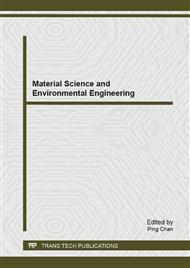p.375
p.381
p.386
p.391
p.396
p.400
p.404
p.409
p.419
Rotating Angle Error Influence to Grinding Aspheric Optical Component
Abstract:
An analyzing rotating error method has presented based on grinding aspheric optical component. A coordinate transform has been done between the new and original coordinates system in view of the rotating error in installing parts, further, the rotating angle error model has deduced between actual curve and theoretical curve. The surface error formulas can be used for variety of rotary conic aspheric curve, depending on the requirements of the parts surface accuracy, quantitative adjustment target can be given in installation and adjustment process before grinding. Based on the rotating error formulas, the calculating example shows that installation angle bas various different influence to surface shape error, the error decreases with the θ decreasing, the surface error is reduced a magnitude accordingly when the angle is reduced to a magnitude. The parts surface error is up from-0.0030mm to-0.0448mm when the rotating angle increasing from 0.1° to 1°. When θ is constant, the surface shape error increases with steepness increasing, installing rotating angle requirement is more stringent for all the large steepness parts.
Info:
Periodical:
Pages:
396-399
Citation:
Online since:
May 2014
Authors:
Keywords:
Price:
Сopyright:
© 2014 Trans Tech Publications Ltd. All Rights Reserved
Share:
Citation:


